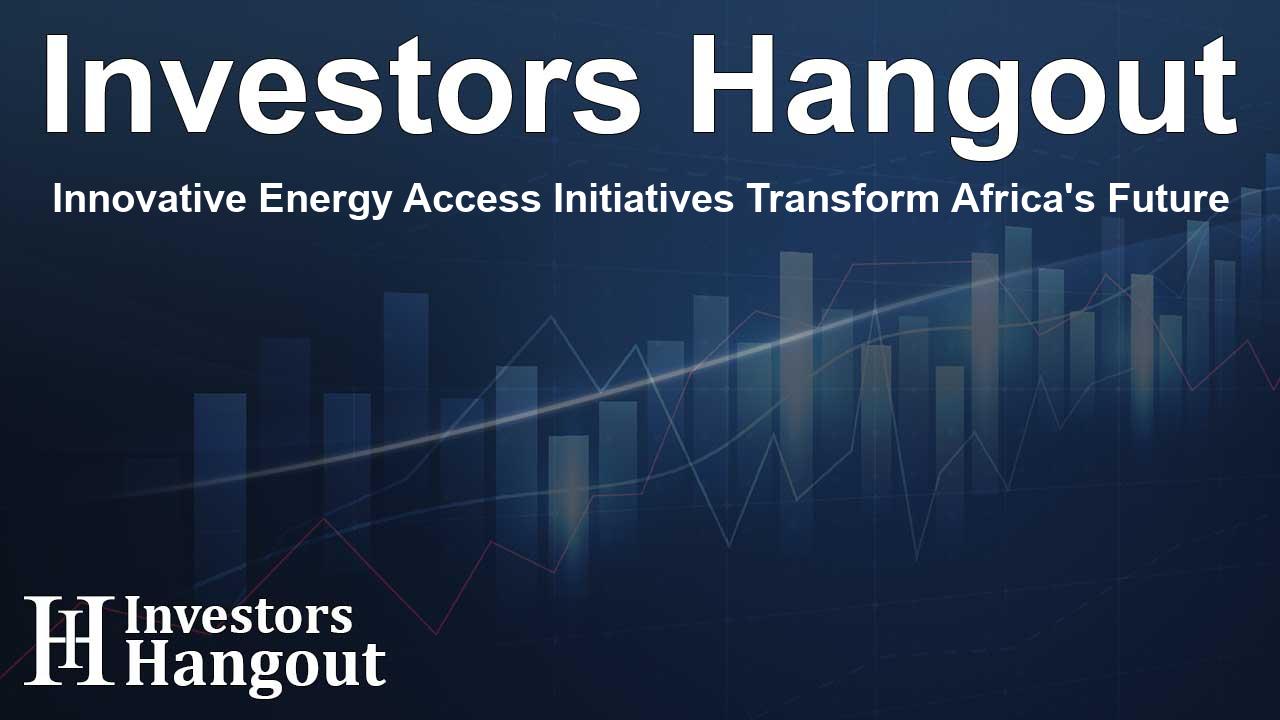Innovative Energy Access Initiatives Transform Africa's Future

Empowering Africa Through New Energy Initiatives
The Global Energy Alliance for People and Planet (GEAPP) and The Rockefeller Foundation are leading transformative energy access projects across Africa. By leveraging a strong foundation of collaboration and innovative strategies, these organizations aim to enhance electricity availability in numerous regions, significantly impacting the lives of millions. Recently, during a prominent energy summit, both organizations unveiled plans for nearly two dozen projects that will aid extensive electrification efforts on the continent.
Milestones in Energy Access Projects
Scope of Projects Across the Continent
Among the most noteworthy components of these initiatives are efforts made to support the World Bank and the African Development Bank's (AfDB) Mission 300 initiative. This ambitious program seeks to provide improved electricity access to 300 million Africans by 2030. The partnership between GEAPP and The Rockefeller Foundation includes a whopping initial commitment of US$10 million, marking a vigorous start to the Technical Assistance Facility (TA Facility).
Strategic Partnerships for Lasting Impact
The collaboration highlights how philanthropic efforts, along with strategic partnerships, can effectively break down bureaucratic barriers, facilitating access to renewable energy. In just a short period, significant progress has been achieved, with the potential to reliably serve electricity to an estimated 300 million individuals across Africa. This impressive outreach showcases the capacity for rapid advancement in energy accessibility.
Addressing the Electricity Gap
Currently, Africa holds a disheartening average electrification rate of just 50%, leaving around 600 million individuals without dependable electricity. To address this pressing issue, initiatives launched under the TA Facility will include a myriad of support structures. For instance, rural electrification projects in Burkina Faso aim to elevate electricity access in regions with some of the lowest service rates in West Africa.
Sustainability and Renewable Energy Focus
These enhancing efforts will not only drive short-term improvements in electricity access but are also tailored to ensure long-term sustainability. For example, projects targeting low and medium voltage distribution systems in Chad are designed to augment electricity trade and uplift access within the capital city, impacting approximately 256,000 residents by 2030.
Broadening Horizons for Future Generations
In addition to immediate project developments, major goals include amplifying financial expertise and facilitating access to new funding avenues. The initiative underlines the importance of local capacity-building efforts, aiming to empower African governments and local institutions as they collaborate with organizations like the AfDB and World Bank. Through these partnerships, GEAPP supports new project designs while emphasizing innovation and economic growth.
Collaborative Approaches for Further Advancements
Across multiple nations, from the Democratic Republic of Congo to Liberia, tailored technical assistance will bolster local electrification agencies, ensuring effective project execution and sustainability. For instance, support directed towards the Liberia Electricity Corporation aims to provide electric network planning and operational guidelines, thereby enhancing the functionality of local power supply systems.
Conclusion: A United Vision for a Powered Future
The alliances formed through GEAPP and The Rockefeller Foundation represent a revolutionary approach to energy access in Africa. By combining philanthropic efforts with a powerful collaborative network, they are laying the groundwork for effective energy solutions aimed at fostering economic development, sustainability, and social well-being for all African communities.
Frequently Asked Questions
What is GEAPP and its role in energy access?
GEAPP (Global Energy Alliance for People and Planet) focuses on accelerating universal energy access through strategic partnerships with stakeholders to enhance clean energy solutions.
How does the Mission 300 initiative function?
Mission 300 aims to provide improved electricity access to 300 million Africans by 2030, emphasizing collaborative efforts and innovation in renewable energy projects.
What are the main objectives of the recent energy projects?
The recent energy projects aim to address electricity shortages, enhance sustainable energy solutions, and foster local community development across various African nations.
How can local communities benefit from these initiatives?
Local communities will gain access to reliable electricity, bolstering economic opportunities, enhancing education through better resource availability, and improving overall quality of life.
What impact can these projects have on climate goals?
These initiatives are designed to support global climate goals by reducing carbon emissions through the adoption of sustainable energy practices, helping combat the ongoing climate crisis.
About The Author
Contact Riley Hayes here.
About Investors Hangout
Investors Hangout is a leading online stock forum for financial discussion and learning, offering a wide range of free tools and resources. It draws in traders of all levels, who exchange market knowledge, investigate trading tactics, and keep an eye on industry developments in real time. Featuring financial articles, stock message boards, quotes, charts, company profiles, and live news updates. Through cooperative learning and a wealth of informational resources, it helps users from novices creating their first portfolios to experts honing their techniques. Join Investors Hangout today: https://investorshangout.com/
The content of this article is based on factual, publicly available information and does not represent legal, financial, or investment advice. Investors Hangout does not offer financial advice, and the author is not a licensed financial advisor. Consult a qualified advisor before making any financial or investment decisions based on this article. This article should not be considered advice to purchase, sell, or hold any securities or other investments. If any of the material provided here is inaccurate, please contact us for corrections.
